
If you have an open line of credit, you have a revolving credit utilization ratio. Business debt comes in many forms: lines of credit, credit cards, loans, and various other forms of financing.
In terms of credit scores, debt often falls into one of two categories: installment loans or revolving credit. Because the amount of available revolving debt plays such a huge role, understanding revolving debt is essential if you’re looking to build your business credit score.
This guide explores revolving utilization, how credit utilization impacts your credit score, and how to reduce utilization. Let’s jump in!
What Is Revolving Credit?
You can think of revolving credit as the rotating balance between the amount of credit you owe and the amount of credit available for your use. As a form of debt allowing holders to immediately re-access credit as soon as it’s paid off, revolving credit includes no set term period and only requires a minimum monthly payment. Revolving credit providers issue clients a credit limit, which is the total amount the client can borrow at any given time. While some revolving credit accounts may incur an annual fee, others only incur interest on the portion of the credit used.
A credit card is the most well-known form of revolving credit. When credit card holders spend money on their cards, they accrue a balance deducted from their credit limit, meaning their available credit decreases. When cardholders repay the money borrowed, they can immediately borrow it again without another credit application.
Both consumers and business owners can benefit from revolving credit, as it provides full flexibility to borrowers. On the other hand, credit cards and other forms of revolving credit can carry significant interest rates.
Installment Loan vs. Revolving Credit
Assessing revolving credit in the context of other forms of debt makes it easier to understand its uniqueness. With an installment loan, a lender loans a specific sum of money and a borrower agrees to pay back the loan (with interest) over a defined loan term. Installment loans are commonly utilized for expensive purchases, such as sophisticated equipment, vehicles, and other such goods.
On the other hand, revolving credit borrowers can choose to pay as much or as little as they’d like each month as long as they meet the minimum payment(s) requirement set by their lender. Afterward, they can then immediately access the money that was paid back, whereas installment loan borrowers must reapply for a new loan before accessing more financing.
Installment loans are more structured than revolving lines of credit and credit cards. Borrowers have a strict timeline for paying back their debt, so total financing costs are more predictable. With installment loans, you lose the flexibility of normal lines of credit, but you gain a set structure of paying your debt off in pre-determined stages.
What Is Revolving Utilization?
Revolving utilization is the amount of credit borrowed at any given time. Credit bureaus assess revolving credit utilization in determining your creditworthiness.
What Is a Credit Utilization Ratio?
A credit utilization ratio is a numerical indication of the amount of credit used. To calculate this ratio, credit bureaus divide your credit balance by your credit limit.
Single Credit Card Utilization vs. Total Credit Utilization
If you have more than one credit card, you have both a per-card utilization rate and a total credit utilization rate. Your per-card rate is the amount of credit utilized on a specific card, whereas your total credit utilization rate is the percentage of your total credit utilized throughout all credit cards.
So, do cardholders need to monitor both forms of credit utilization? Yes—even if your total credit utilization ratio is low, having one card with a high utilization rate can damage your credit score.
What Is a Good Utilization Ratio?
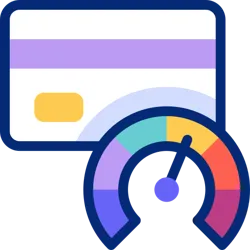
Keeping your credit utilization below 30% will help you maintain a strong business credit score. While many aim to stay below 30%, reducing your utilization to below 10% can be even more beneficial to your overall credit score.
How to Calculate Credit Utilization
If you want to calculate your credit utilization ratio, divide your credit balance by your credit limit. Remember, you’ll need to calculate your per-card utilization and your overall utilization. Let’s look at an example of this below.
Credit Card Utilization Ratio Example
Here’s an example of a credit card utilization ratio among multiple credit accounts:
Low-Interest Credit Card (Card 1)
- Credit Card Balance: $2,000
- Credit Card Limit: $10,000
- Credit Card Utilization Ratio: 2,000/10,000 = 20%
Low-Interest Card (Card 2)
- Credit Card Balance: $500
- Credit Card Limit: $2,000
- Credit Card Utilization Ratio: 500/2,000 = 25%
Rewards Credit Card (Card 3)
- Credit Card Balance: $1,000
- Credit Card Limit: $10,000
- Credit Card Utilization Ratio: 1,000/10,000 = 10%
Total Credit Utilization Ratio
- Total Credit Balance: $3,500
- Total Credit Limit: $22,000
- Credit Card Utilization Ratio: 15.9%
How Credit Utilization Affects Your Credit Score
Credit utilization plays a significant role in credit score algorithms, but their exact weight varies depending on the credit reporting bureau. See below for the two examples:
VantageScore 3.0
In general, VantageScore weighs credit utilization as 20% of a credit score, making it one of the most critical factors in determining your creditworthiness. Below is a full breakdown of its scoring calculation:
- Payment History: 40%
- Age and Types of Credit: 21%
- Credit Utilization: 20%
- Total Balances: 11%
- Recent Credit Behavior: 5%
- Available Credit: 3%
FICO
FICO also uses credit utilization to determine your creditworthiness. With FICO, “amounts owed” determine 30% of your credit score—and this includes credit utilization.[1]FICO. “What’s in my FICO® Scores?“. Accessed November 2, 2022. Below is a full breakdown of its scoring calculation:
- New Credit: 10%
- Credit Mix: 10%
- Amounts Owed: 30%
- Payment History: 35%
- Length of Credit History: 15%
To build your credit score, focus on credit utilization, account age, on-time payments, and other factors contributing to a healthy credit file. While low credit utilization is an excellent starting point for good credit, it won’t be worth much if you don’t pay your bills on time.
When Is Credit Utilization Reported?
Credit card issuers typically report credit utilization monthly, meaning you can expect to see a new utilization rate each month. However, the exact date your credit card issuer reports your credit balance varies depending on the issuer.
Likewise, credit bureaus may take time to update your credit report after they receive the information from your credit card issuer. This means you might see updates to your score multiple times per month if you have credit cards from various issuers.
Also, not all credit card companies report to all three major bureaus—Experian, Equifax, and TransUnion—meaning that your credit utilization may differ on each credit report. This is why monitoring your credit reports across bureaus can help paint a complete picture of your credit profile.
Still, reducing your revolving utilization can quickly improve your credit score because credit issuers report utilization rates to credit bureaus very quickly. Conversely, it won’t take long for an increase in utilization to damage your score.
How Can You Reduce Revolving Utilization?
Because reducing your revolving utilization works wonders for your credit score, you might be wondering what the best way to reduce your revolving credit utilization is. Below explores a few valuable strategies:
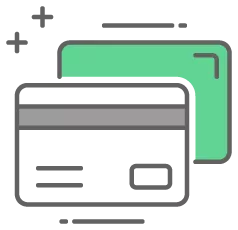
Open a new credit card
If you cannot afford to pay down your existing debt, opening a new credit card helps reduce your utilization. Once approved for a new card, the newly available credit is added to your overall available credit, which waters down your existing utilization. While this is helpful, be sure to pay off new balances promptly to keep your utilization low.

Request an increase in credit limit
Requesting a credit limit increase on existing credit cards is another quick way to reduce your revolving utilization. While lenders may require additional credit inquiries or updated income information, this process is typically quick. Additionally, this process shouldn’t impact your credit score; but even if you take a short-term credit hit, the long-term benefits to your credit utilization will outweigh any near-sighted downside.[2]Experian. “Does it Hurt to Increase Your Credit Limit?“. Accessed November 2, 2022.
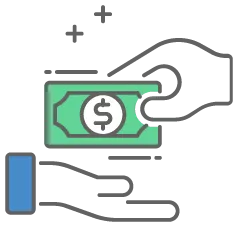
Pay credit card debt
Paying down existing credit card debt can significantly lower your credit utilization. Even slowly chipping away at it will help improve your score. Additionally, transferring your credit card balance to a new card with zero interest can help pay down debt. If you can’t find a credit card with no interest, you might be able to transfer your balance to a card with a lower interest rate.
One thing to note while attempting to lower your credit utilization is that it’s not just credit card debt that you should worry about, you also need to pay down any lines of credit in your name.

Refrain from closing accounts
When you close a credit account, you lose the available credit associated with that account. While closing an account can be tempting, it can also damage your credit score. You might still consider closing the account if you have a credit card with a hefty annual fee; however, before doing so you should open other credit accounts to increase your credit limit. This will reduce a closed account’s impact on your credit file.
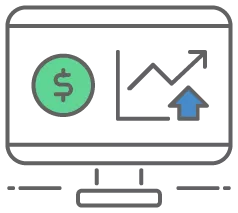
Monitor your spending
Monitoring your spending naturally helps to reduce your revolving debt burden. Setting a budget and sticking to it will eventually help you access extra money so you can easily pay down your existing debt.
Luckily, there are a ton of online resources that make it easy to track your spending, set budgets, and save additional money. Many of the platforms even integrate with your bank account to automatically track spending habits!

Never reach your credit limit
Reaching your credit limit on a single card can decrease your credit score dramatically. To combat this, make sure to spread your spending across a few different credit cards.
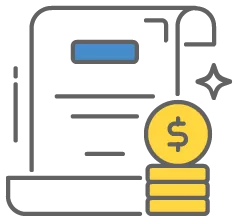
Refinance credit cards with a personal loan
Lastly, if paying down debt or opening new credit cards is not an option for you, using a debt consolidation loan to offload your revolving debt can be a helpful alternative. Once you obtain a loan, you can pay off your credit cards. While this removes your existing revolving debt, you will still need to pay back your loan in full. Not only can this process improve your credit score, but it can also make paying your debt back much simpler by consolidating your credit cards into a single payment.
What Is Credit Utilization? Final Thoughts
Understanding credit utilization helps you manage your business’s credit score more effectively. If you want to increase your access to loans, lower interest rates, and more favorable credit cards, managing your credit utilization should be a critical element of your credit-building strategy. Never underestimate the power of keeping track of your revolving credit balances, and take advantage of our affordable financing options today!
FAQs About Revolving Credit Utilization
How much will lowering my credit utilization affect my credit score?
One of the most significant contributing factors to your credit score is your revolving credit utilization. Credit reporting bureaus believe increased credit utilization indicates higher risk. There is an inverse relationship between credit utilization and your credit score; the more your utilization increases, the more your credit score decreases.
How do I know if I have a utilization problem?
If you currently carry a credit utilization rate over 30%, it can pose a problem to your credit score. Keeping your credit utilization below this mark can help you maintain a strong credit profile.
How does closing a credit card affect your utilization rate?
Closing a credit card can impact your utilization rate significantly. When you close a card, you lose its credit limit from your credit file, meaning your available credit will be reduced by the amount the credit the card afforded you. This can cause your utilization rate to spike and lower your credit score.
How much of my credit limit should I use?
As a rule of thumb, avoid using more than 30% of your available credit. Once you surpass 30%, lenders may assess you as a high-risk borrower. If possible, it’s best to keep your revolving utilization under 10%.
Does credit utilization matter if you pay in full?
Yes. One of the biggest misconceptions is that your credit card utilization won’t matter if you pay your bills in full. While it’s a good practice to pay your credit card bill in full, as it helps you avoid interest, your credit card issuer reports your balance pre-payment. This means if you have an $800 balance on a $1000 limit, but pay the balance in full, your credit utilization will still be 80%.
Paying your balance before the statement date or only using a small amount of your available credit is the best way to avoid a high utilization rate.
Is zero credit utilization bad?
A small amount of credit utilization shows lenders and credit reporting bodies you are using your credit responsibly. For this reason, if you’re tempted to use no credit at all, Experian recommends keeping your credit utilization under 10% as an alternative.[3]Experian. “Is 0% Credit Utilization Good For Credit Scores?“. Accessed November 2, 2022.
Is a credit card installment or revolving?
A credit card falls into the revolving debt category. Cardholders only pay for the debt they access, meaning they don’t need to make payments or accrue interest if they don’t have a credit card balance. However, many credit cards have annual fees that must be paid regardless of whether the cardholder has a balance.
Is an auto loan an installment loan or revolving credit?
An auto loan falls under the installment loan category. If you gain approval for an auto loan, you must make routine payments within a defined loan term. Usually, this means you will make monthly payments for several years. Popular auto loan terms include three-, four-, and five-year terms, although options vary depending on the lender.







